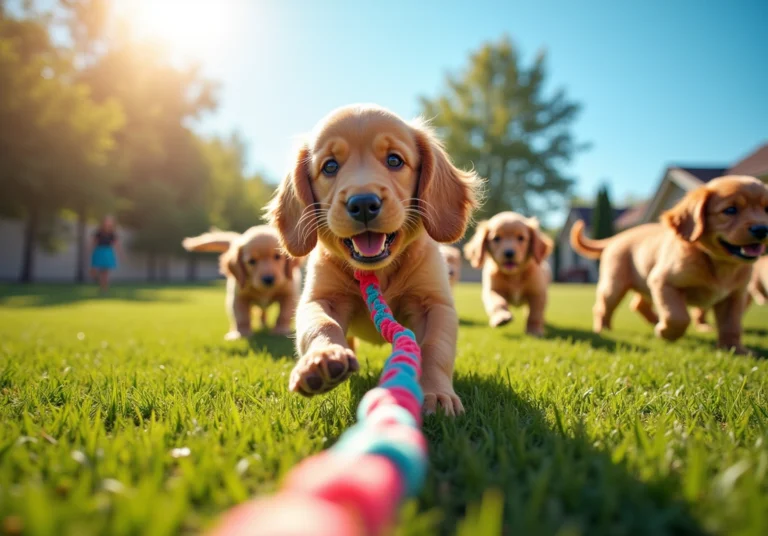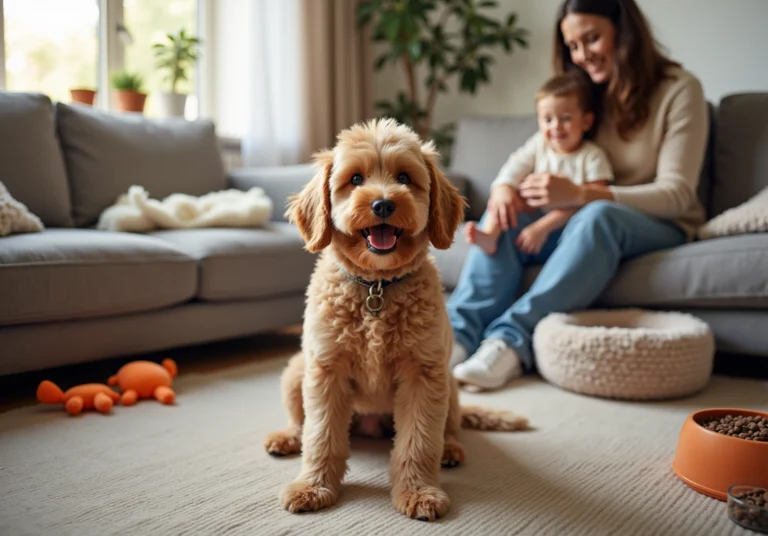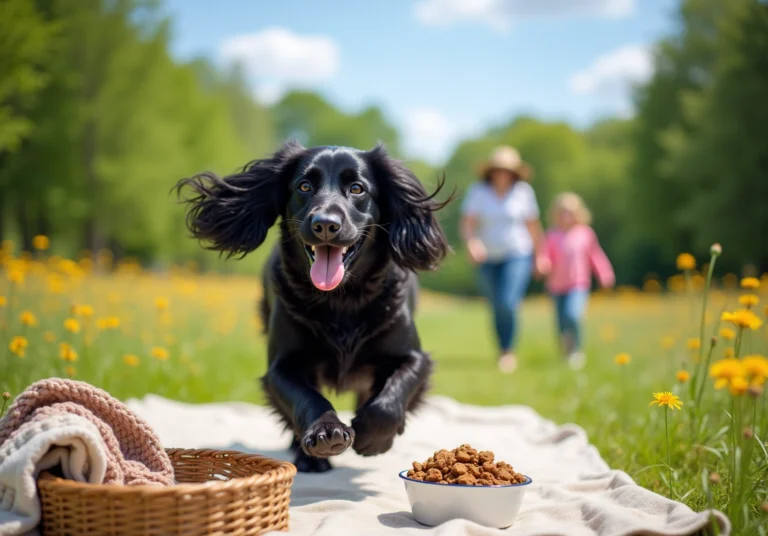5 Essential Steps for Effective Dog Training Vancouver
Overview
This article presents five essential steps for effective dog training in Vancouver, focusing on the importance of positive reinforcement, consistency, and a structured routine. It highlights specific training techniques and emphasizes the significance of involving the whole family. By addressing common challenges, the article aims to foster a nurturing environment that enhances the learning experience for your furry family members.
As you consider the journey of training your dog, remember that each step is an opportunity to strengthen your bond and create a loving atmosphere. Embrace the joy of learning together, and rest assured that with patience and dedication, you can overcome any obstacle.
By implementing these strategies, you not only support your dog’s growth but also cultivate a deeper connection within your family. Let’s embark on this rewarding journey together, ensuring that your pet thrives in a caring environment.
Introduction
Effective dog training is vital for nurturing a harmonious bond between you and your furry family member. Yet, many pet parents often feel overwhelmed by the countless techniques and principles available. This guide will explore five essential steps designed to simplify the training process, enhancing the experience for both dogs and their humans.
With so many methods to choose from, how can you determine which approach will truly resonate with your beloved companion and yield the best results? Let’s embark on this journey together, ensuring a nurturing environment for your pet.
Understand the Basics of Dog Training
Dog training is rooted in the principles of learning theory, encompassing both classical and operant conditioning. Your furry family members learn through association and reinforcement, making it essential to understand some key concepts:
- Positive Reinforcement: This involves rewarding desired behaviors to encourage their recurrence. At Adventure Den, trainers often use treats or praise when a dog sits on command, creating a supportive atmosphere that reinforces this action.
- Negative Reinforcement: This technique focuses on removing an unpleasant stimulus when the desired action occurs, helping your dog associate the action with positive outcomes.
- Consistency: It’s crucial to use the same commands and cues to avoid confusing your dog. This clarity is especially important in a daycare environment like Adventure Den, where pets interact with various trainers and activities.
- Timing: Delivering rewards or corrections immediately after the action is vital for helping your dog make connections. At Adventure Den, we emphasize immediate feedback to ensure dogs understand their actions in real-time.
Understanding these fundamentals will aid you in creating a nurturing educational environment that promotes learning and positive behavior. Adventure Den, which includes the largest outdoor play zone in Vancouver, provides an engaging space for dog training Vancouver, enriching these learning principles and ensuring your dog enjoys a comprehensive experience while acquiring new skills. Join us in fostering a loving and supportive atmosphere for your beloved pets!
Choose Effective Training Techniques
When selecting training techniques for your furry family members, it’s important to consider approaches that foster a nurturing environment.
-
Positive Reinforcement Training: This humane method emphasizes rewarding good behavior, making it both effective and enjoyable for dogs. By utilizing treats, praise, or toys as rewards, you can encourage desired actions. Research, including a 2020 Portuguese investigation, has shown that canines trained with positive reinforcement display improved conduct and are healthier and happier than those trained with aversive techniques. This method fosters confidence, as your dog learns to associate instruction with enjoyable experiences.
-
Clicker Method: A specialized form of positive reinforcement, the clicker method employs a clicker to precisely mark desired behaviors, followed by a reward. This technique clarifies for dogs exactly what they did right, enhancing their learning process. Studies suggest that clicker methods can significantly boost a dog’s responsiveness and retention of commands, making it a valuable resource for pet owners seeking effective training.
-
Leash Training: Teaching your dog to walk calmly on a leash is crucial for enjoyable outings. Use treats to encourage your dog to remain next to you, reinforcing positive actions during walks. Effective leash guidance not only enhances the walking experience but also fosters better communication between you and your dog. Remember, consistency and patience are essential in this process, as they help your dog understand expectations and improve their behavior over time.
-
Socialization: Expose your dog to diverse environments, people, and other animals to cultivate a well-adjusted and confident pet. Proper socialization is essential for reducing anxiety and promoting positive interactions in various situations.
Select techniques from dog training Vancouver that resonate with both you and your dog, and remain flexible in your approach to ensure the best outcomes for your beloved pet.

Establish a Consistent Training Routine
To establish a consistent training routine for your furry family members, consider these nurturing strategies:
-
Set a Schedule: Dedicate specific times each day for training sessions. Short, frequent sessions of 5-10 minutes are more effective than longer ones, allowing your dog to stay engaged and focused. As Jessica Kim notes, “Dogs thrive on routine because they like to know what to expect.”
-
Integrate Education into Daily Activities: Use everyday moments, such as feeding or walking, as learning opportunities. For instance, ask your dog to sit before meals to reinforce commands in a natural context. This method not only incorporates education into your dog’s daily routine but also assists them in learning in familiar circumstances.
-
Involve the Whole Family: Ensure that everyone in the household uses the same commands and techniques. This consistency helps avoid confusion for your dog and strengthens their understanding of expectations. As emphasized by specialists, engaging the whole family in development creates a supportive atmosphere that aids in your dog’s success.
-
Track Progress: Keep a journal of your sessions to monitor your dog’s growth and modify your approach as needed. This practice not only highlights successes but also identifies areas needing improvement. Tracking progress corresponds with the insights from external sources regarding monitoring focus areas, ensuring that you can adapt your methods effectively.
A structured routine fosters a clear understanding of expectations, reinforcing learning and enhancing the bond between your family and your dog. By engaging all family members in the learning process and utilizing tools like Healthybud Mini Training Treats for positive reinforcement, you create a nurturing environment that contributes to your dog’s success.
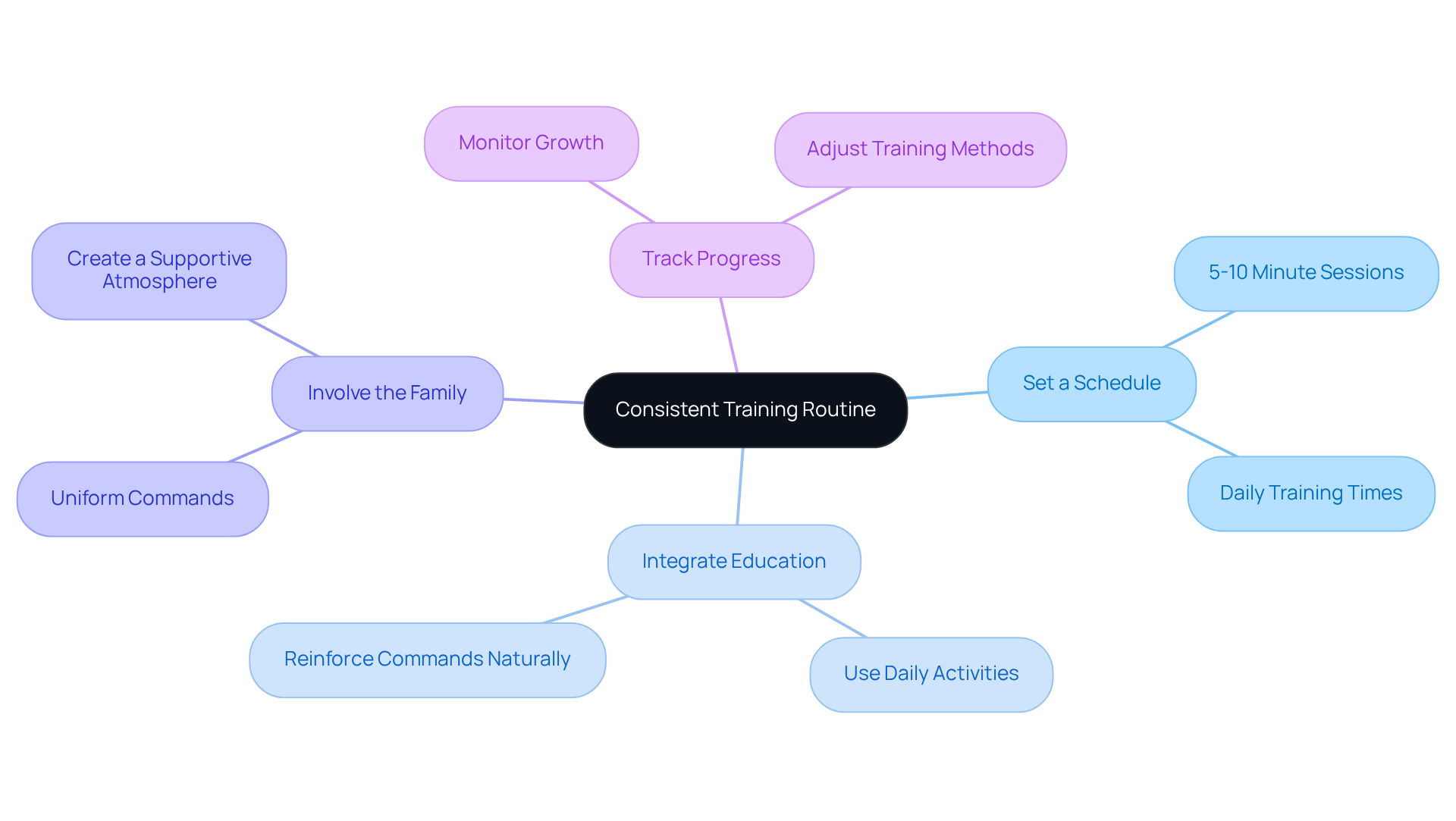
Utilize Positive Reinforcement Strategies
To effectively utilize positive reinforcement in dog training, consider these nurturing strategies:
- Identify Rewards: Discover what truly motivates your furry family member—whether it’s treats, toys, or praise. Customizing these incentives to your dog’s preferences is essential for effective training.
- Timing is Key: Reward your dog immediately after they demonstrate the desired action. This swift reinforcement strengthens the connection between the behavior and the reward, increasing the likelihood that the behavior will be repeated. Research shows that prompt incentives significantly enhance training outcomes.
- Use Markers: Incorporate markers, like a clicker or a specific word, to clarify when benefits are given. This helps pinpoint the exact moment the desired behavior occurs, reinforcing the bond between the action and the reward.
- Vary the Incentives: Keep your dog engaged by diversifying the types of rewards. For challenging tasks, opt for high-value treats, while simpler commands can be rewarded with lower-value options. Additionally, consider non-food incentives like play or affection, as some dogs may respond more positively to these motivators. This approach not only sustains engagement but also prevents reliance on a single type of reward.
- Slowly Decrease Incentives: As your dog masters a behavior, gradually reduce the frequency of rewards. This technique, known as fading, helps avoid dependence on constant incentives while still encouraging the desired behavior.
- Be Patient: Remember that learning is a gradual journey. Celebrate small victories and maintain a positive outlook, even if progress seems slow. Consistency in reward timing and placement alleviates anxiety and builds confidence in your dog.
By embracing these positive reinforcement strategies, you foster a nurturing environment that encourages your dog to learn and thrive.
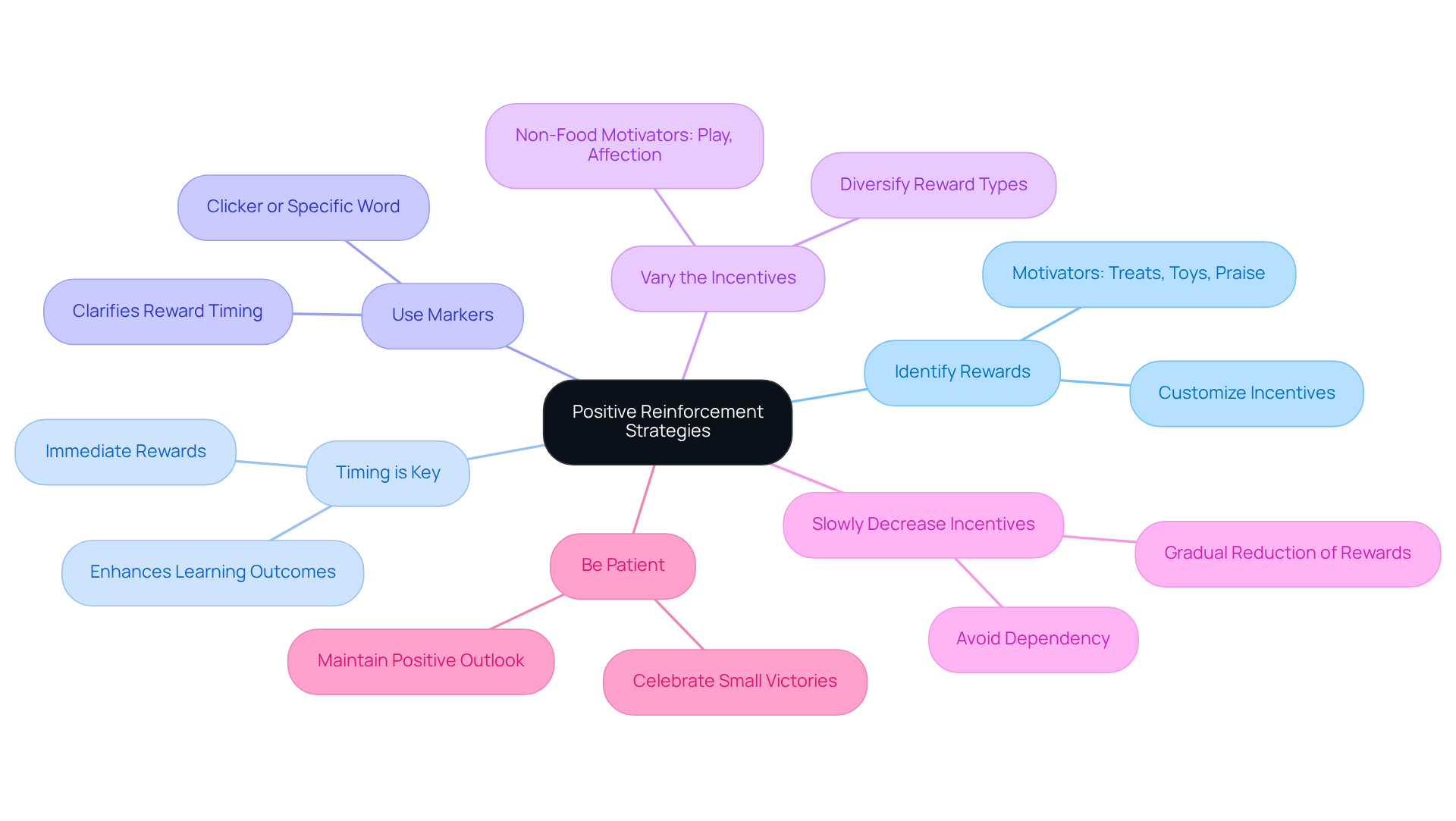
Troubleshoot Common Training Challenges
Training your furry family members can sometimes present challenges, but understanding how to troubleshoot them can lead to a nurturing environment for both you and your pet. Here are some common training hurdles and compassionate solutions:
- Distractions: If your dog struggles to focus during training, consider practicing in a quiet environment first. Gradually introducing distractions can help them learn to concentrate amidst the chaos of everyday life.
- Inconsistent Responses: It’s essential for everyone in your household to use the same commands and incentives. This consistency will help avoid confusion for your beloved companion, making the training process smoother.
- Lack of Motivation: When your dog isn’t responding to rewards, it might be time to explore different treats or toys. Finding what excites them can reignite their enthusiasm for training.
- Behavior Regression: If your dog reverts to old behaviors, don’t be discouraged. Revisit basic commands and reinforce them with positive reinforcement. This gentle reminder can help them feel secure and confident.
By identifying and addressing these challenges, you can maintain a productive training environment and foster a positive relationship with your dog. Remember, every step you take is a step toward a stronger bond with your furry friend.

Conclusion
Effective dog training is essential for fostering a strong bond between you and your furry family members. By implementing the principles of positive reinforcement, establishing a consistent training routine, and addressing common challenges, you can create a nurturing environment that promotes learning and good behavior. Understanding foundational concepts like timing, consistency, and the use of rewards lays the groundwork for successful interactions with your dog.
Throughout this guide, we’ve highlighted key strategies, including:
- The importance of positive reinforcement techniques
- The clicker method
- The value of socialization
Setting a training schedule, involving the whole family, and tracking progress are crucial steps to ensure a cohesive approach to dog training. By actively engaging with your pet and adapting to their needs, you can enhance their learning experiences and overall well-being.
Ultimately, the journey of dog training is not just about teaching commands; it’s about building trust and understanding between you and your pet. Embracing these essential steps and remaining patient and consistent will lead to a rewarding relationship with a well-trained, happy dog. Take action today by exploring effective dog training techniques in Vancouver and creating a positive atmosphere that benefits both you and your beloved companion.
Frequently Asked Questions
What are the basic principles of dog training?
Dog training is based on learning theory, which includes classical and operant conditioning. Key concepts include positive reinforcement, negative reinforcement, consistency, and timing.
What is positive reinforcement in dog training?
Positive reinforcement involves rewarding desired behaviors to encourage their recurrence, such as using treats or praise when a dog sits on command.
How does negative reinforcement work in dog training?
Negative reinforcement focuses on removing an unpleasant stimulus when the desired action occurs, helping the dog associate that action with positive outcomes.
Why is consistency important in dog training?
Consistency is crucial because using the same commands and cues helps avoid confusing the dog, especially in environments with multiple trainers and activities.
How does timing affect dog training?
Timing is vital as delivering rewards or corrections immediately after the action helps the dog make connections between their behavior and the feedback they receive.
What training techniques are effective for dogs?
Effective techniques include positive reinforcement training, the clicker method, leash training, and socialization.
What is the clicker method?
The clicker method is a form of positive reinforcement that uses a clicker to mark desired behaviors precisely, followed by a reward, enhancing the dog’s learning process.
How can leash training benefit my dog?
Leash training helps your dog walk calmly beside you, improving the walking experience and fostering better communication between you and your dog.
Why is socialization important for dogs?
Socialization exposes dogs to diverse environments, people, and other animals, promoting confidence and reducing anxiety in various situations.
How can I choose the best training techniques for my dog?
Select techniques that resonate with both you and your dog, and remain flexible in your approach to ensure the best outcomes for your pet.




